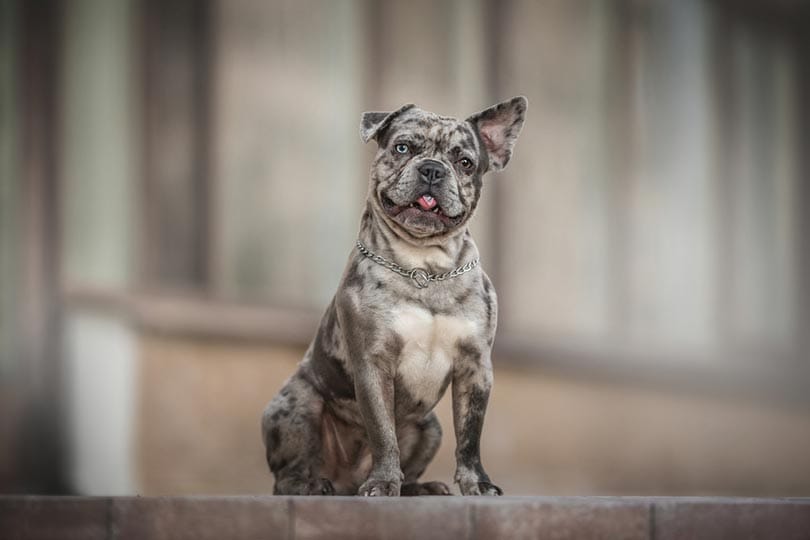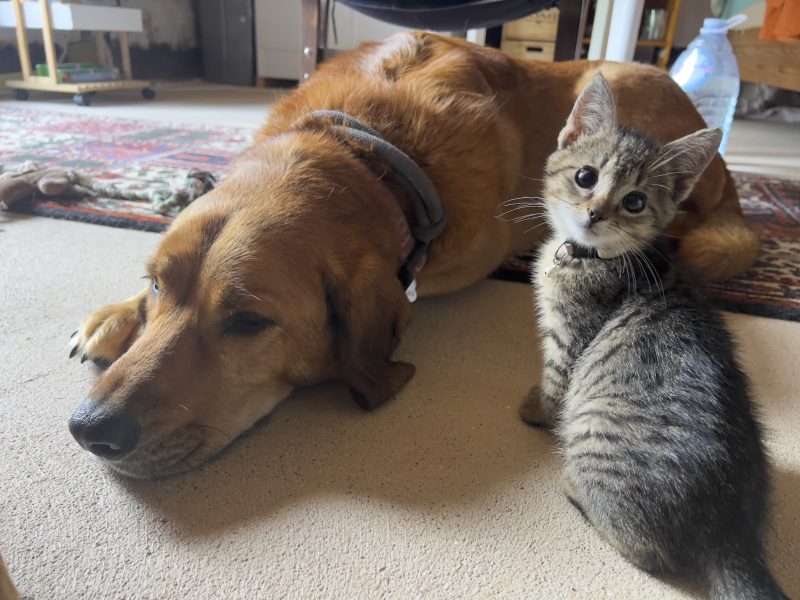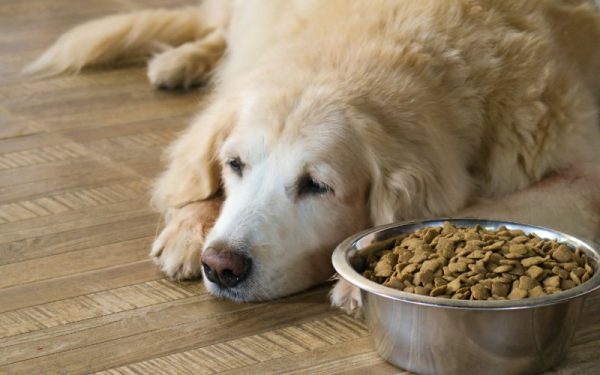French Bulldogs are beloved for their small stature and adorable faces; it is only natural that some may covet the rare colors the dogs may have.
Breed Overview
Height:
Small to medium (11 – 12 inches)
Weight:
20 – 28 pounds for males, 16-24 pounds for females
Lifespan:
10 – 12 years
Colors:
Fawn, fawn and white, fawn brindle, brindle, brindle and white, cream, white and brindle, white and fawn
Suitable for:
Families looking for a playful, easy-to-groom lapdogs that does not require a lot of space.
Temperament:
Easygoing, sociable, gentle, friendly, playful, affectionate
In case you were unaware, the Merle French Bulldog is a unique variation of the French Bulldog. The most notable difference between the two is that the Merle version has a distinctive coat with a patterned, mottled color.
If you are curious about the Merle French Dog or have one yourself and want to learn more, keep reading for some interesting facts!
French Bulldog Characteristics

The Earliest Records of French Bulldogs in History
This pup has quite a thrilling history. Although developed in England, most of the French Bulldog’s relevant history remains in France. In 19th century England, an industrial boom was sparking all kinds of innovation. This was not all good because many people found themselves out of jobs. They were pushed aside in favor of automated machinery that could perform their jobs faster and more efficiently.
Those out of work had little choice but to pack up and move to France, and they took their bulldogs with them: the dogs that would someday be known as French Bulldogs. In France, the little dogs quickly became adored. They were often kept as companions by prostitutes; their looks were often used as icebreakers to lighten the mood.
After its popularity grew in France, it made its way to the United States, where its popularity boomed and brought us to where we are today.
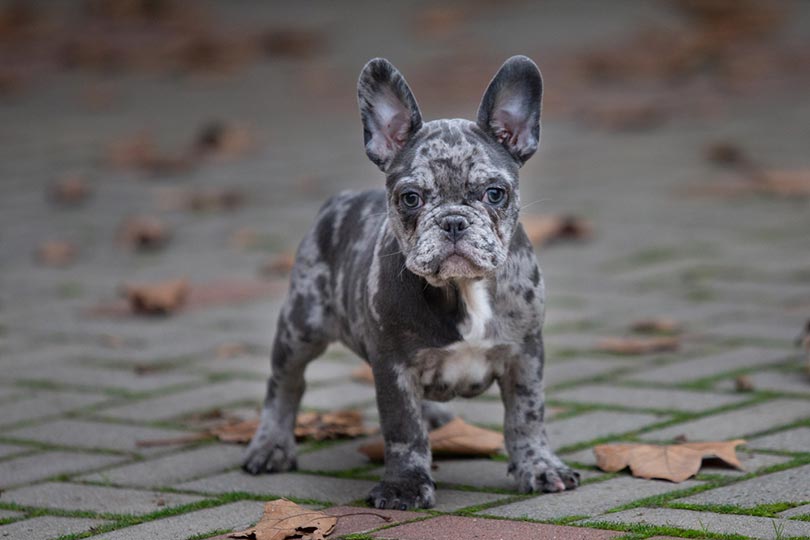
How French Bulldogs Gained Popularity
Though initially, the dogs started as the companions of prostitutes, that did not limit them solely to the specific social sphere. In fact, the French Bulldog eventually gained notoriety in Paris. This marked the shift of the French Bulldog from a lower social sphere to the highest of them all: royalty.
Grand Duchess Tatiana Romanov owned a French Bulldog in her time. With such esteemed connections, it did not take long for American tourists to become enamored with the breed, and they eventually introduced it to the United States.
The French Bulldog’s popularity has boomed ever since, and in 2021, it was the second most popular breed in America.
Formal Recognition of Merle French Bulldog
The Merle French Bulldog is coveted yet controversial.
The French Bulldog was recognized as an official breed in 1898 by the American Kennel Club, but the Merle French Bulldog was not. According to the breed standard, the Merle French Bulldog is disqualified from being a proper French Bulldog.
The coat colors that fall within the parameters of the breed standard are white, cream, and fawn. Combinations of those colors are also accepted. As for the markings, the acceptable patterns include piebald, brindle, black masks, black shadings, white markings, and ticking. The AKC explicitly states that merle is a disqualifying color.
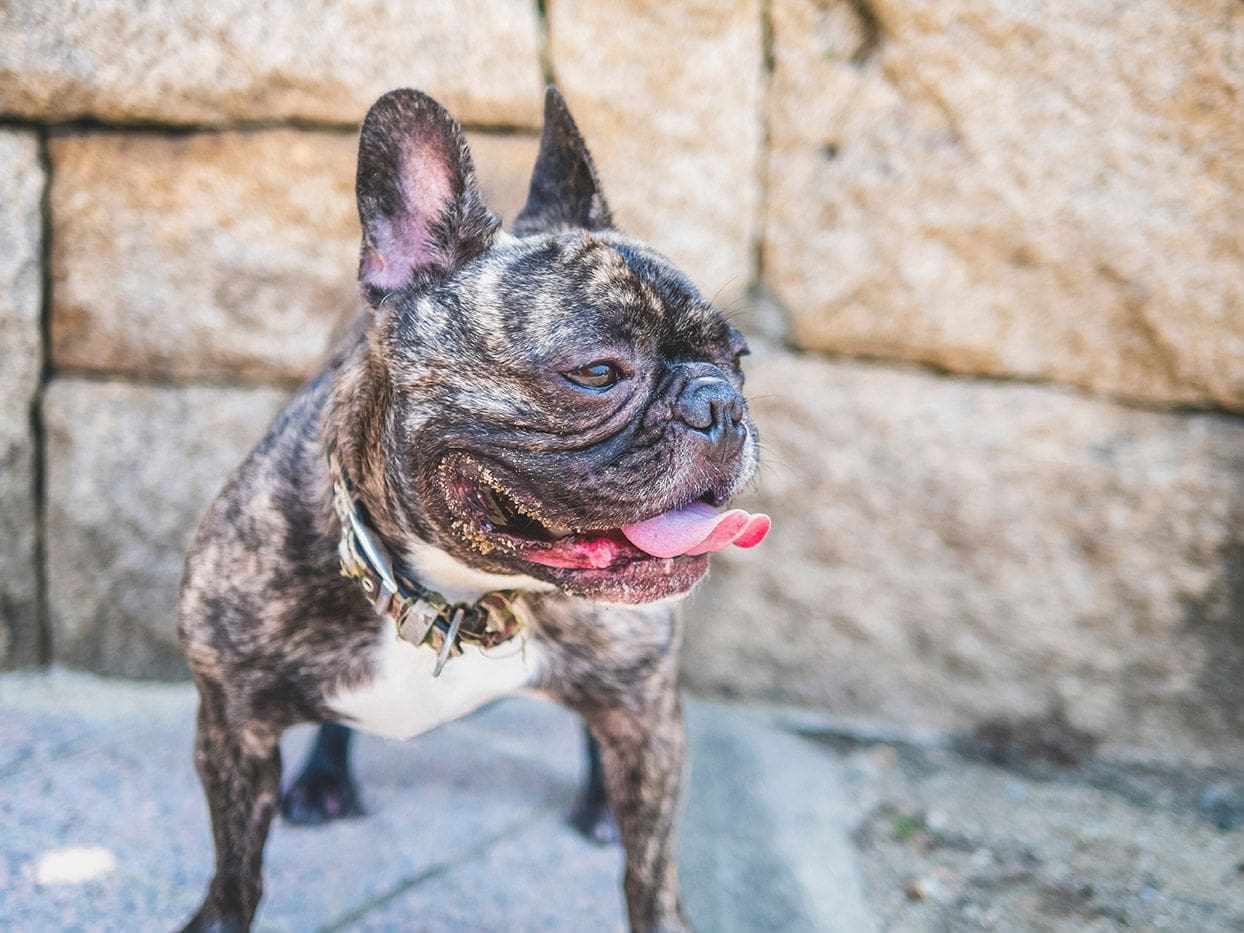

Top 3 Unique Facts About Merle French Bulldogs
Clearly, there is a lot of intruding history and controversy surrounding the Merle French bulldog, but what are some other interesting facts about it? Let’s take a look!
1. There Are Multiple Color Variations for Merle French Bulldogs
Since merle patterns are influenced by genetics, the combination of genes can lead to different expressions of color. Three colors, in particular, are more sought after due to their rarity. They are blue, black, and lilac.
2. Merle French Bulldogs Are at Higher Risk for Health Complications
A significant reason Merle French Bulldogs are so controversial is the health conditions that can arise from irresponsible breeding. As stated before, the merle pattern is genetic. Unfortunately, the gene that establishes the patterning is also linked to genetic health risks. The risks include complications with the ears and the eyes.
That is why breeding a Merle with another Merle should never be done. When two Merle French Bulldogs are bred together, there is an extremely high chance that their offspring will have even worse complications. The risks include deformity, deafness, blindness, or color dilution alopecia. There are also increased chances of neurological disorders, immune conditions, severe allergies, and death.
3. There Is a Phenomenon Known as The Ghost Merle
It is hazardous to breed two Merle French Bulldogs together. However, sometimes it happens by accident due to The Ghost Merle. Sometimes, dogs have Merle genetics without outwardly expressing them. That means a dog may look ordinary while secretly carrying the gene for Merle patterning. If the dog is bred with another Merle French Bulldog, all the offspring will have higher chances of severe health conditions.

Does the Merle French Bulldog Make a Good Pet?
French Bulldogs are known for their sweet, loveable temperaments, and Merle French Bulldogs are no different. The breed is affectionate with their family, good with children, and friendly with other dogs.
Regarding grooming, the French Bulldog is pretty easy to work with. They do not shed often, and weekly brushing is generally all that is needed to help maintain the coat. The folds of their face may need a little extra help to keep clean and dry, and the nails should be trimmed to help avoid pain. French Bulldogs don’t like their nails to be too long!

Final Thoughts
With an engaging history, a rare coat, and an ongoing controversy, the Merle French Bulldog is a fascinating animal. If you have one of your own, you are probably aware of the importance of ethical breeding. However, if you plan on owning one in the future, please thoroughly research your prospects to ensure your new pet was raised by a responsible breeder.
Featured Image Credit: Liudmila Bohush, Shutterstock
